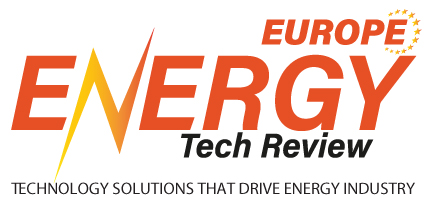CLOSE
Specials
I agree We use cookies on this website to enhance your user experience. By clicking any link on this page you are giving your consent for us to set cookies. More info
Be first to read the latest tech news, Industry Leader's Insights, and CIO interviews of medium and large enterprises exclusively from Energy Tech Review
Thank you for Subscribing
Europe's Energy Transition as Global Investment Magnet
Europe is leading a €1 trillion energy transition driven by the Green Deal, focusing on renewable energy, infrastructure, and decarbonization, offering vast investment opportunities.

By
Energy Tech Review | Tuesday, November 18, 2025
Stay ahead of the industry with exclusive feature stories on the top companies, expert insights and the latest news delivered straight to your inbox. Subscribe today.
Europe stands at the forefront of the global energy transition, transforming an environmental imperative into a monumental economic opportunity. Driven by the ambitious European Green Deal and the urgent need for energy independence, the continent has unlocked a projected market of at least €1 trillion (approximately $1.08 trillion) in sustainable investments over the coming decade. This massive commitment, fueled by a combination of EU funds, national co-financing, and private-sector mobilization, represents a seismic shift that offers unparalleled opportunities for global investors.
The Policy Engine: Green Deal and REPowerEU
Europe’s clean-energy investment momentum is anchored in a comprehensive and legally binding policy framework that provides long-term regulatory certainty for investors. At the center of this framework is the European Green Deal, the EU’s overarching growth strategy to achieve climate neutrality by 2050. Its investment arm—the Sustainable Europe Investment Plan, also known as the Green Deal Investment Plan—seeks to mobilize more than €1 trillion by leveraging EU instruments such as the InvestEU program to de-risk early-stage projects and attract private capital at scale. Complementing this strategy is REPowerEU, a policy package introduced in response to geopolitical disruptions, focused on rapidly reducing dependence on Russian fossil fuels by accelerating the clean-energy transition. The plan raises the EU’s renewable energy ambition to a binding target of at least 42.5 per cent by 2030, with an aspirational level of 45 per cent, alongside strengthened energy-efficiency requirements.
Key Investment Sectors: Where Capital Is Flowing
Europe’s €1 trillion clean-energy landscape spans diverse sectors, each offering compelling opportunities for global investors. Renewable energy generation remains a primary focus, with offshore wind leading due to Europe’s technological maturity and large government-backed auctions, particularly in the North Sea. Solar PV continues to expand rapidly as the fastest-to-deploy technology, driving investment in both utility-scale installations and widespread adoption of distributed rooftop systems. Equally critical is investment in grid infrastructure and flexibility; the transition to variable and decentralized renewable power requires modernized transmission and distribution networks, advanced digitalization, and smart-grid technologies capable of managing complex two-way power flows.
Energy storage and battery manufacturing represent another high-growth segment, with capital flowing into utility-scale storage projects essential for grid balancing, as well as gigafactory development to build a resilient European EV battery supply chain. Hard-to-abate sectors are drawing increased interest through emerging decarbonization pathways such as green hydrogen, which is driving investment in electrolyser production, dedicated pipelines, and port infrastructure. Significant opportunities also arise in energy efficiency and building retrofits, where large EU-wide renovation programs create demand for green finance, ESCO models, and innovative construction technologies.
Europe’s $1 trillion clean energy market is an open invitation. It provides not just an investment opportunity but a chance to allocate capital toward a transformative shift underpinned by robust policy, massive public commitment, and a clear line of sight to long-term returns.

Copyright © 2025 Energy Tech Review. All rights reserved






